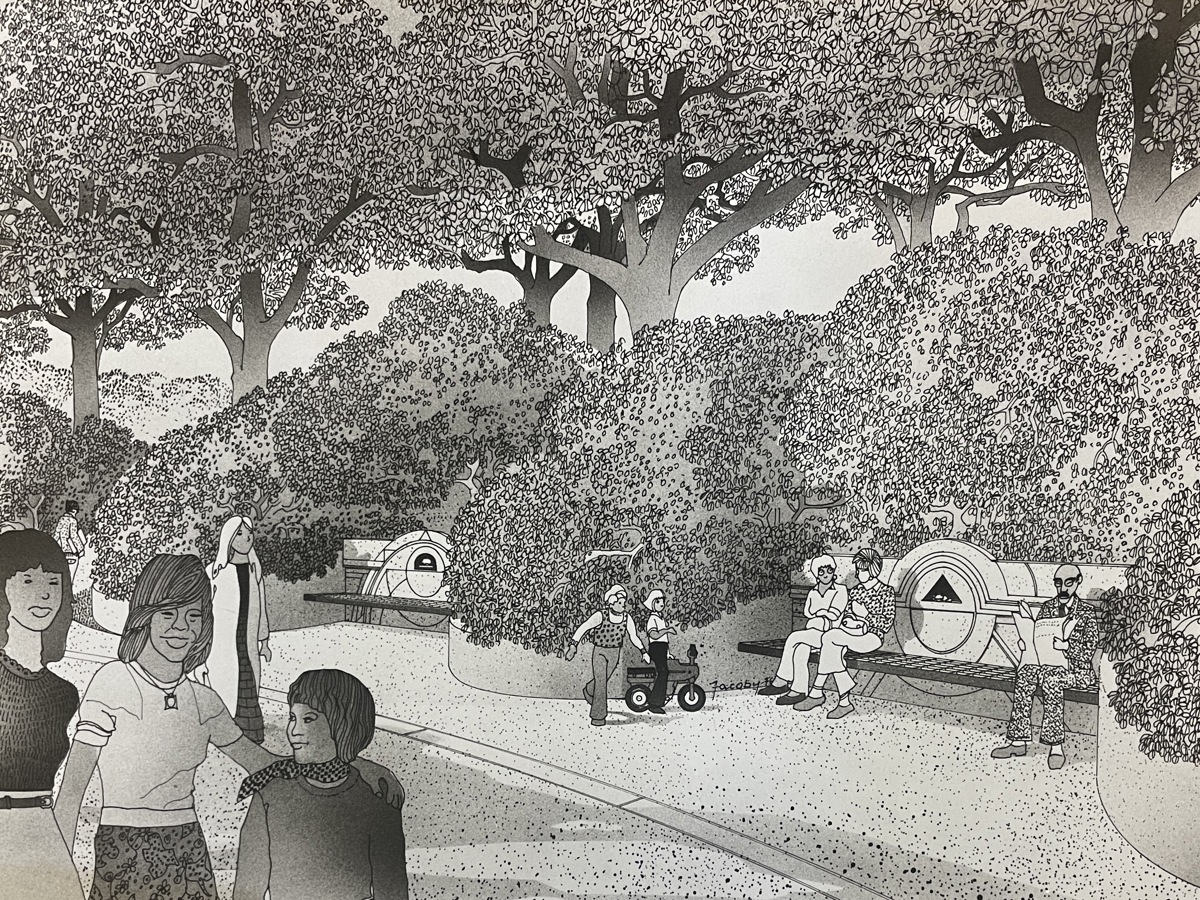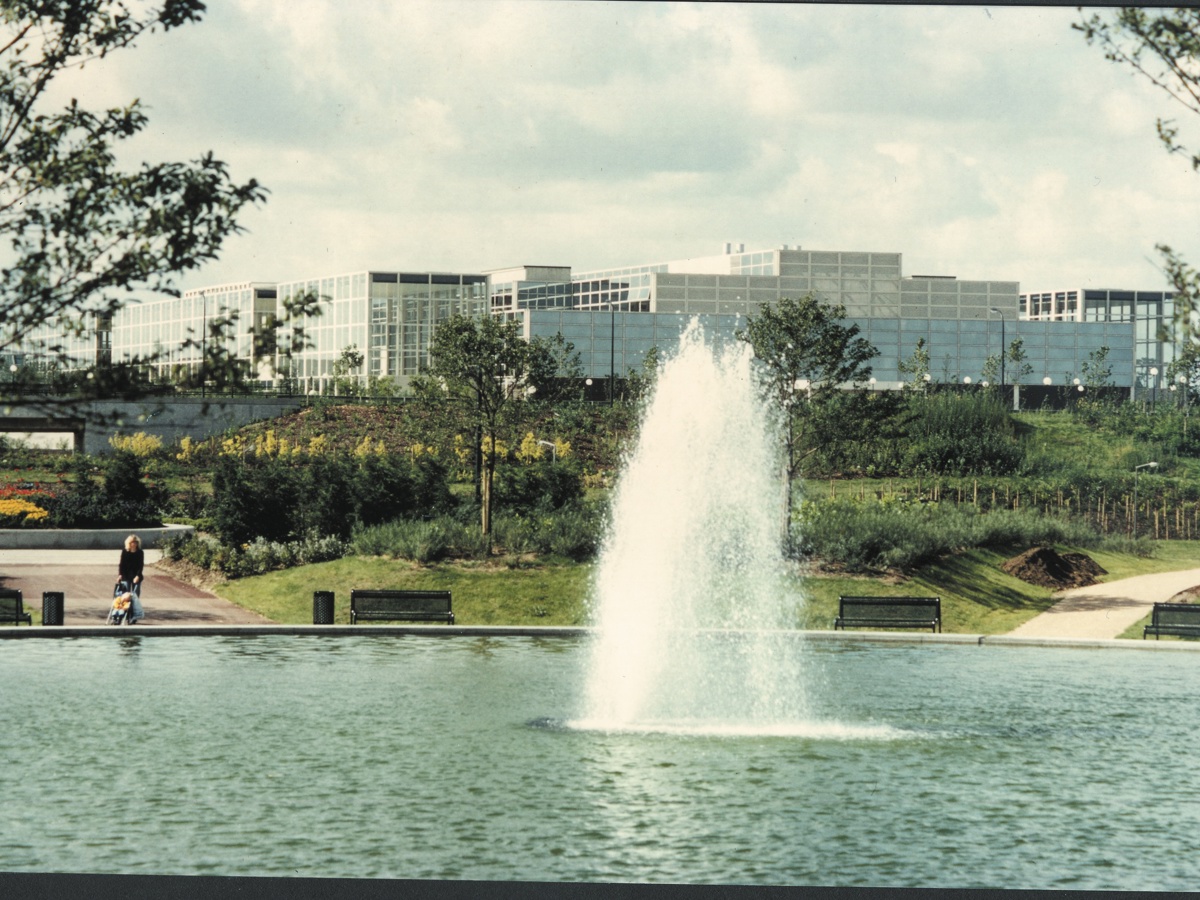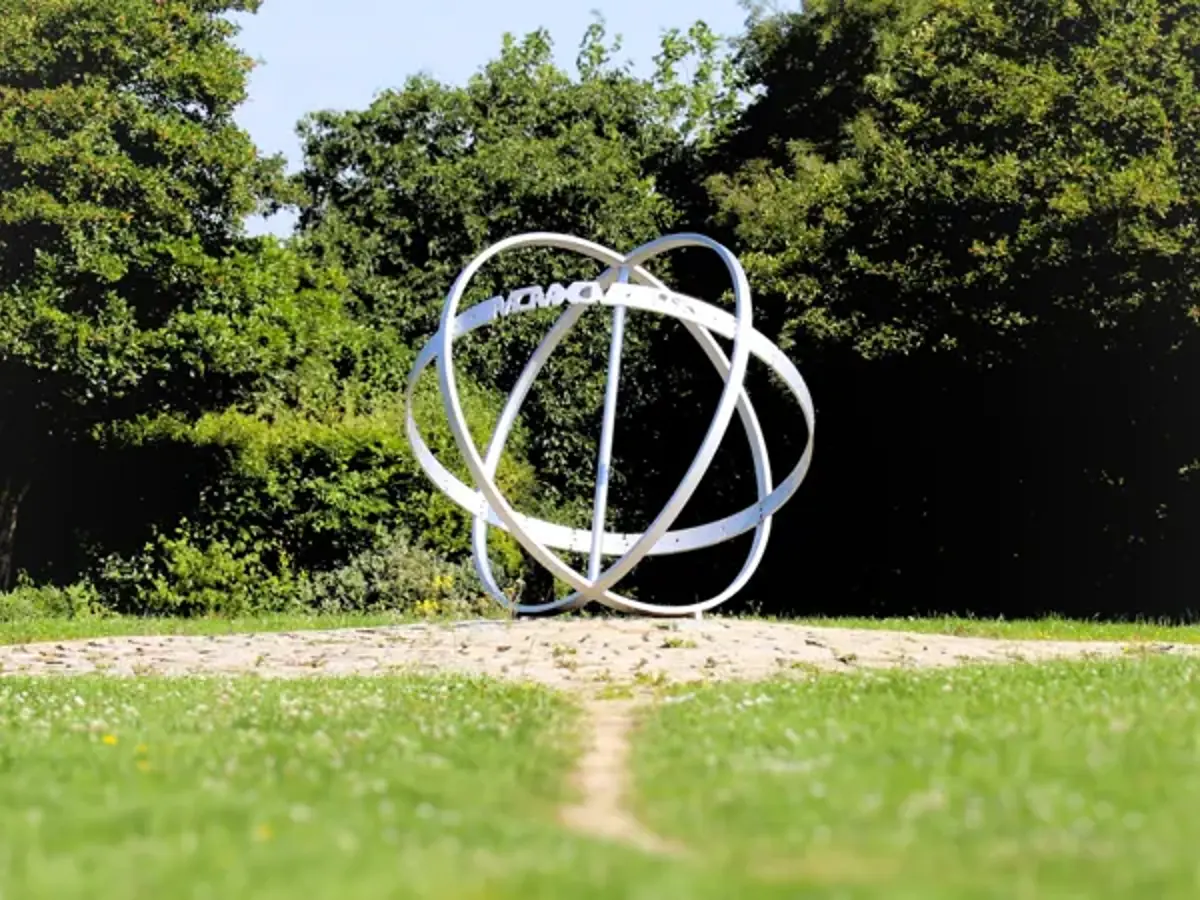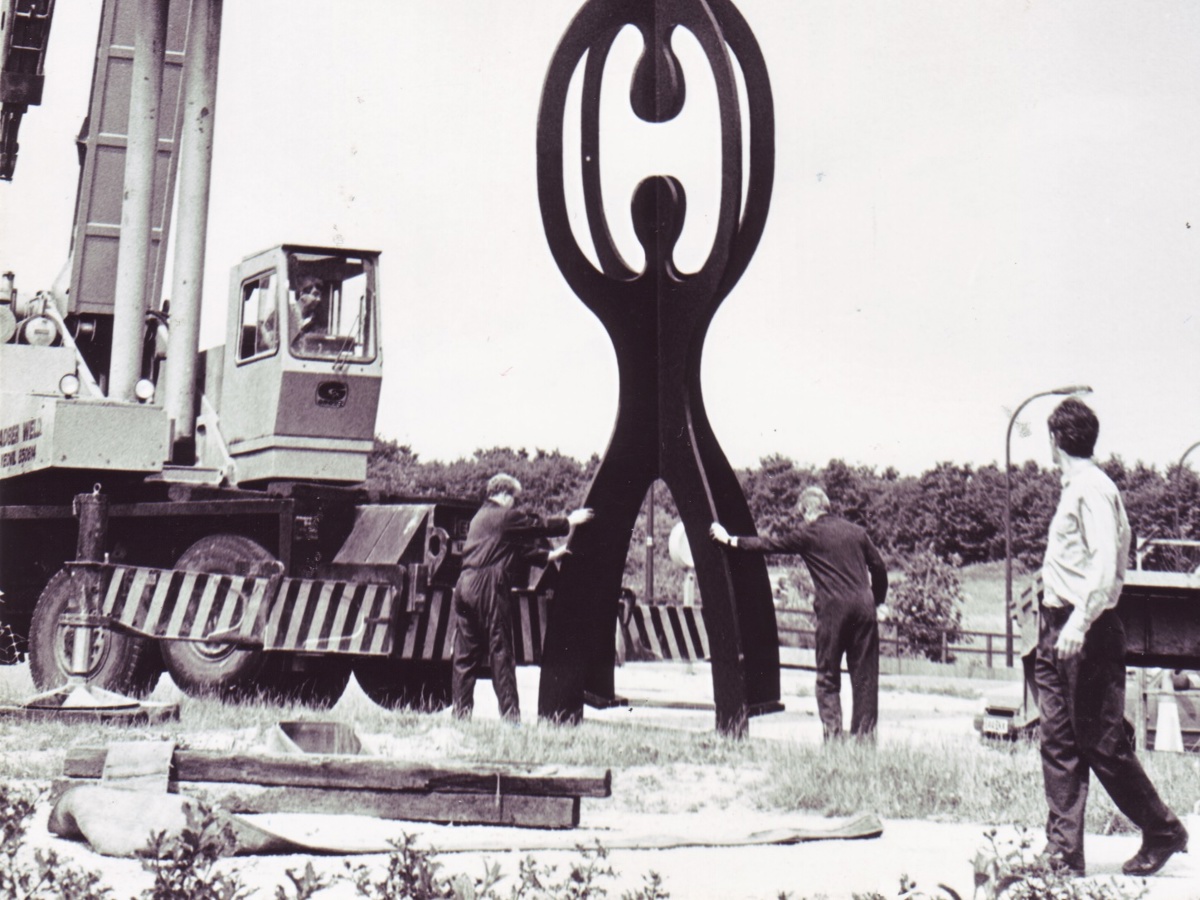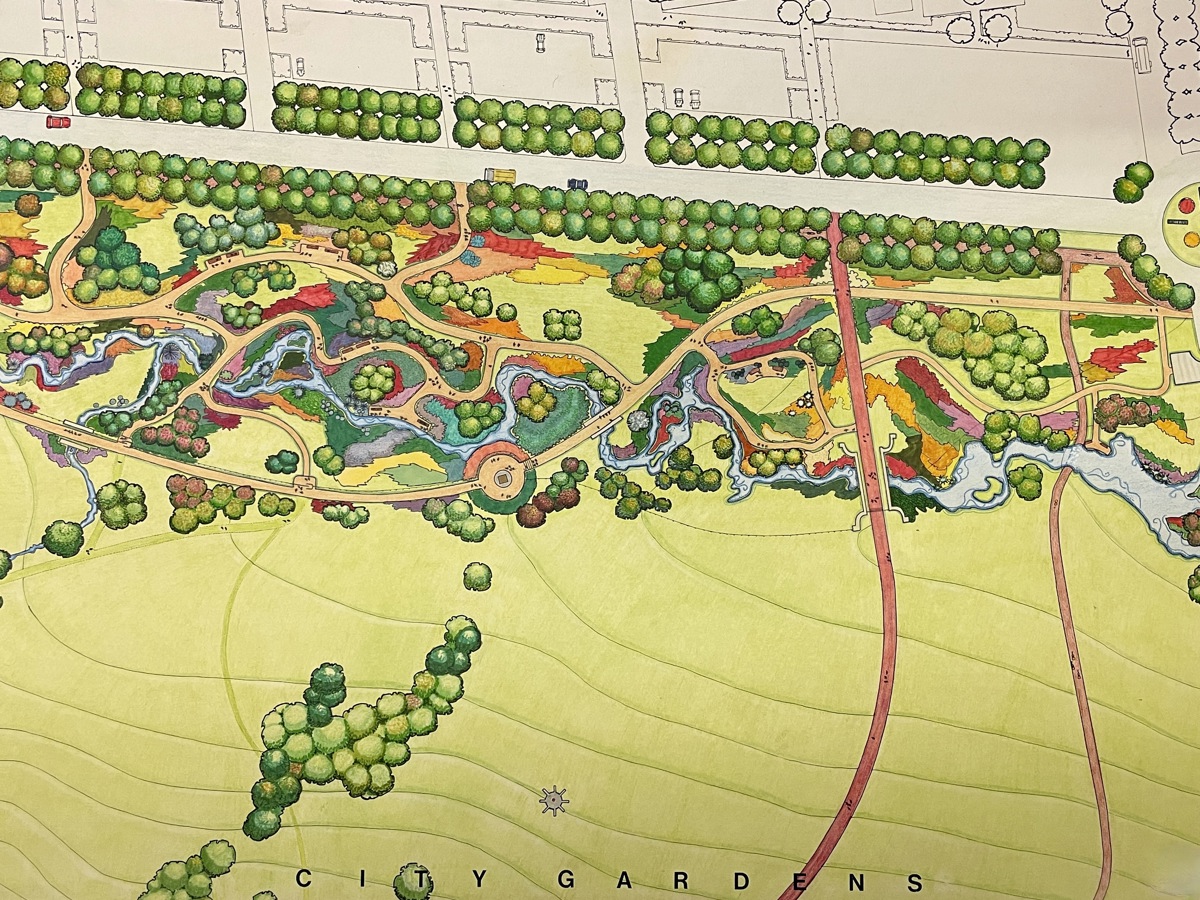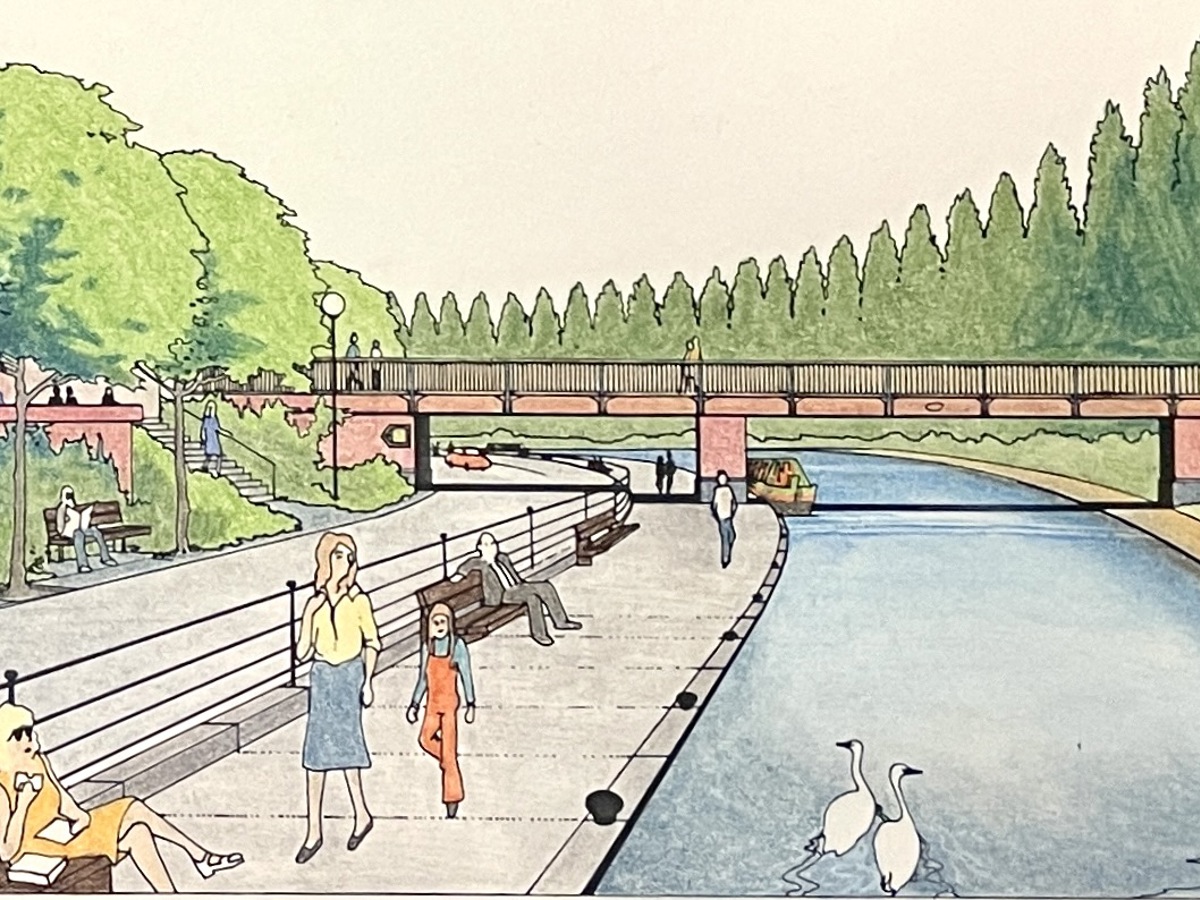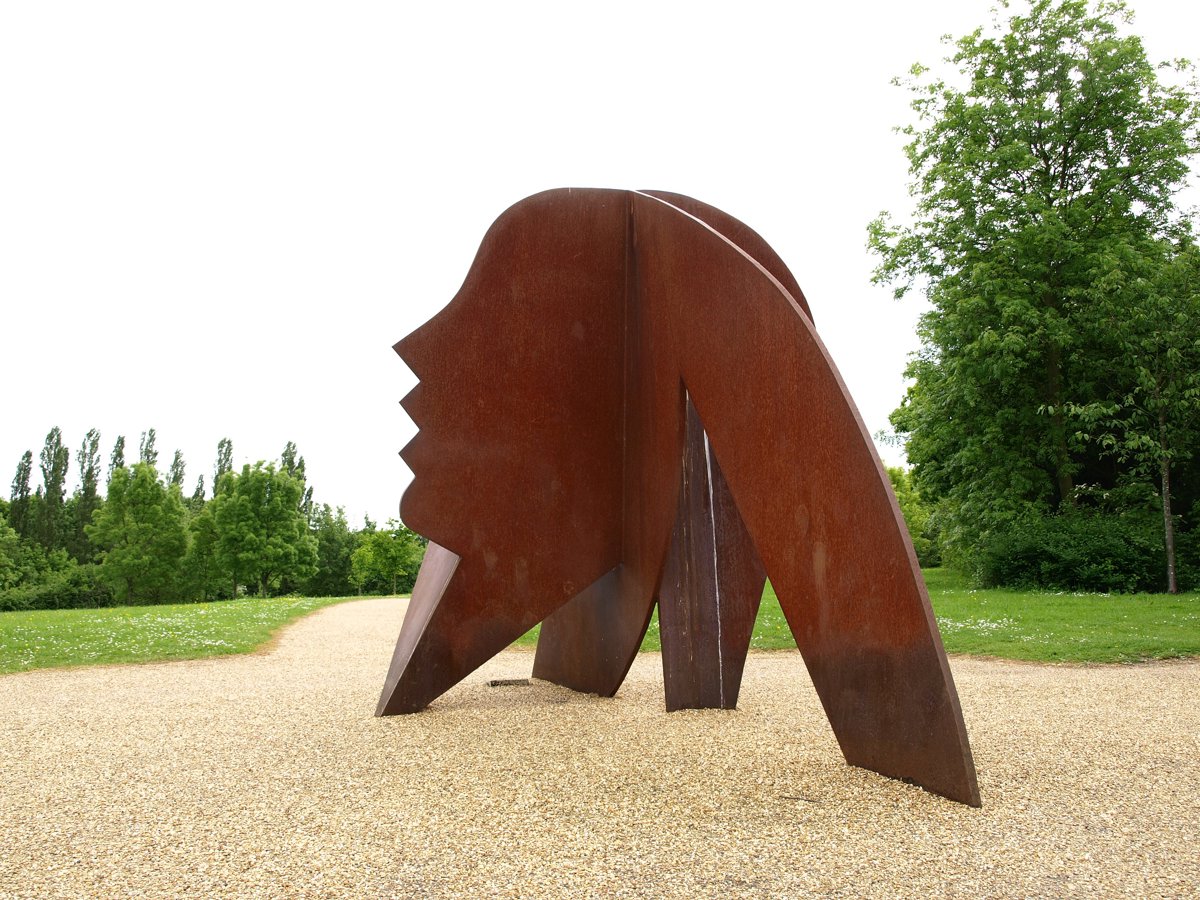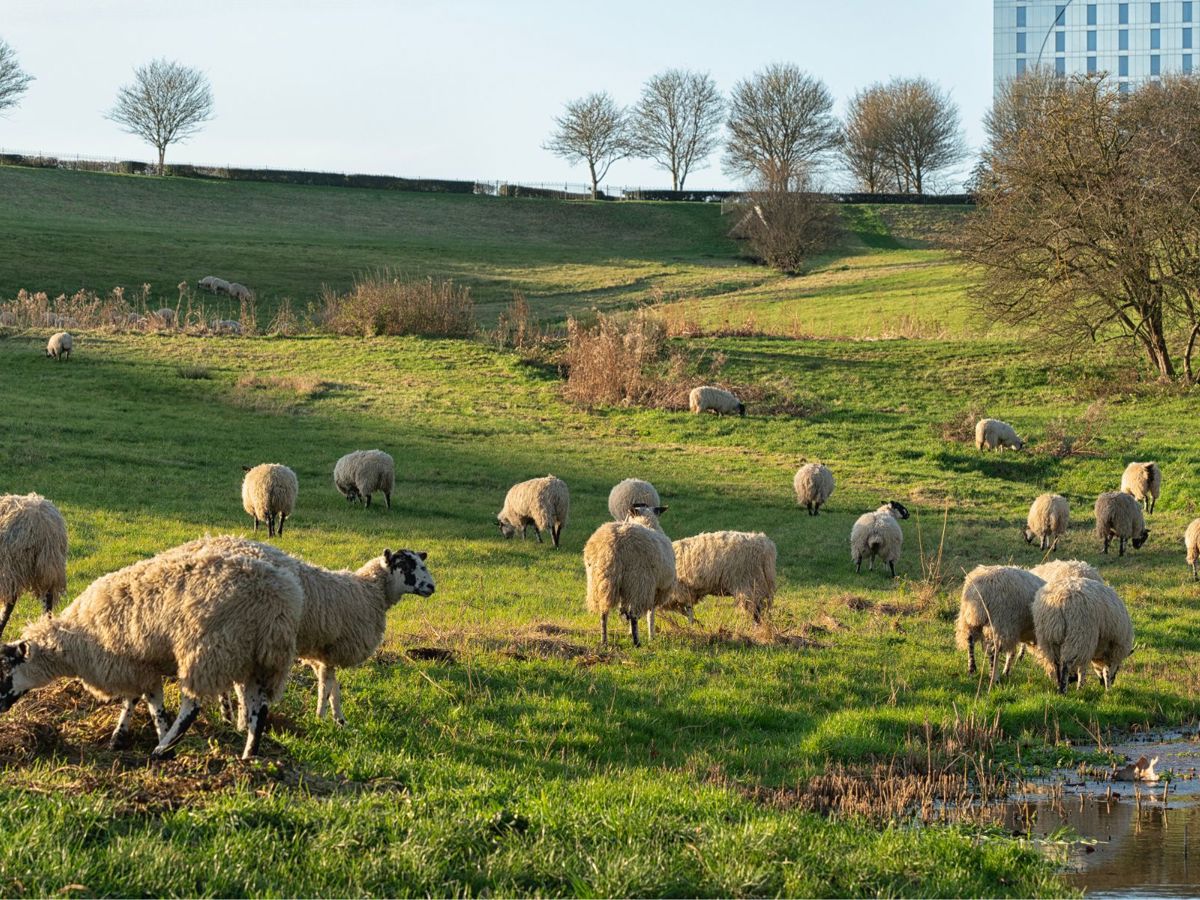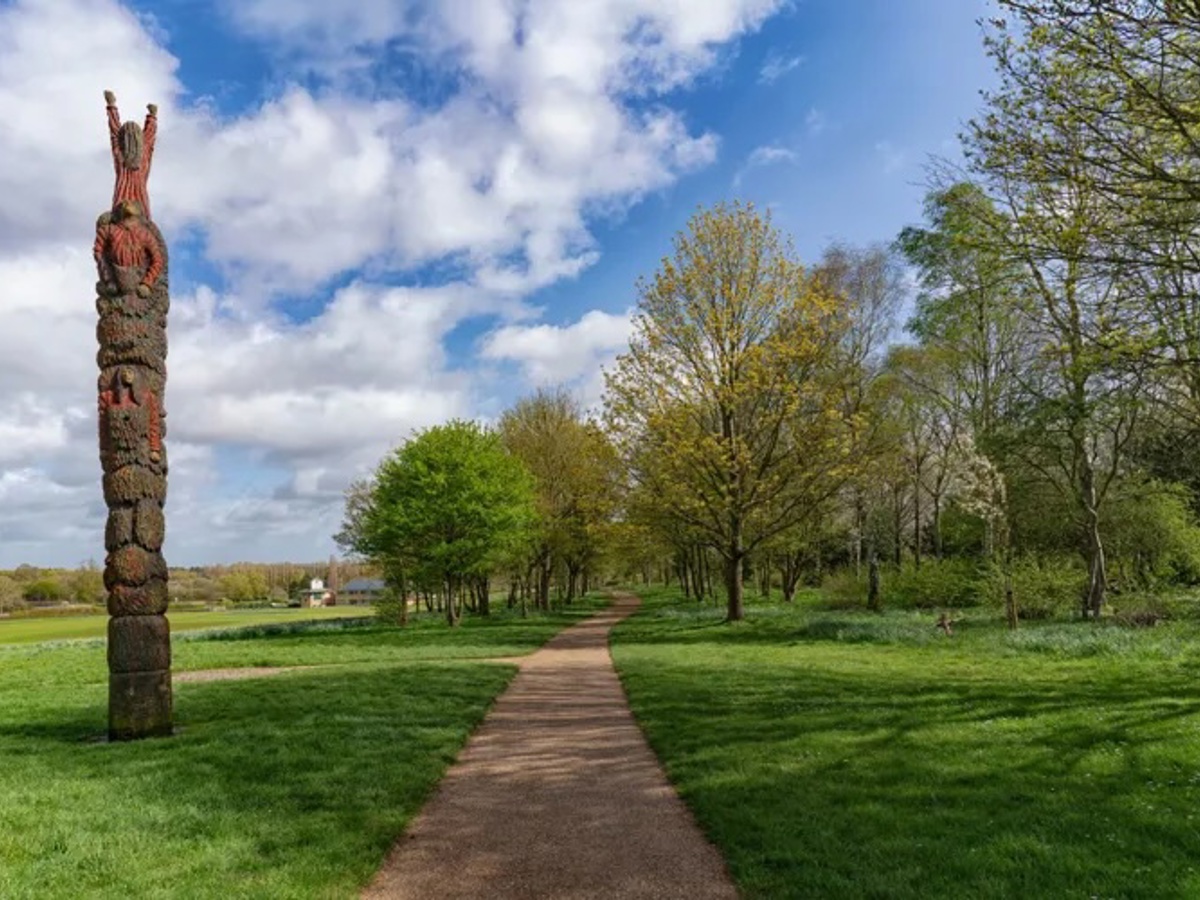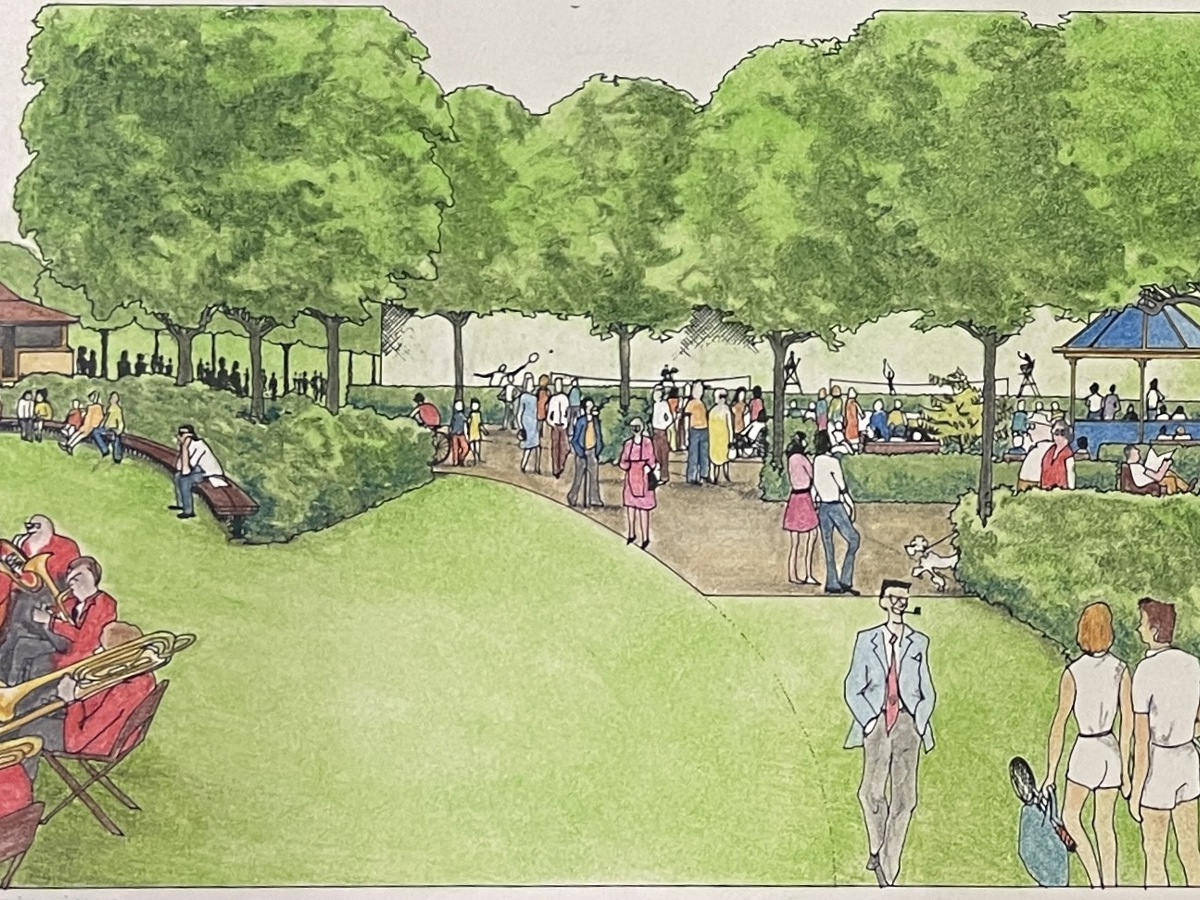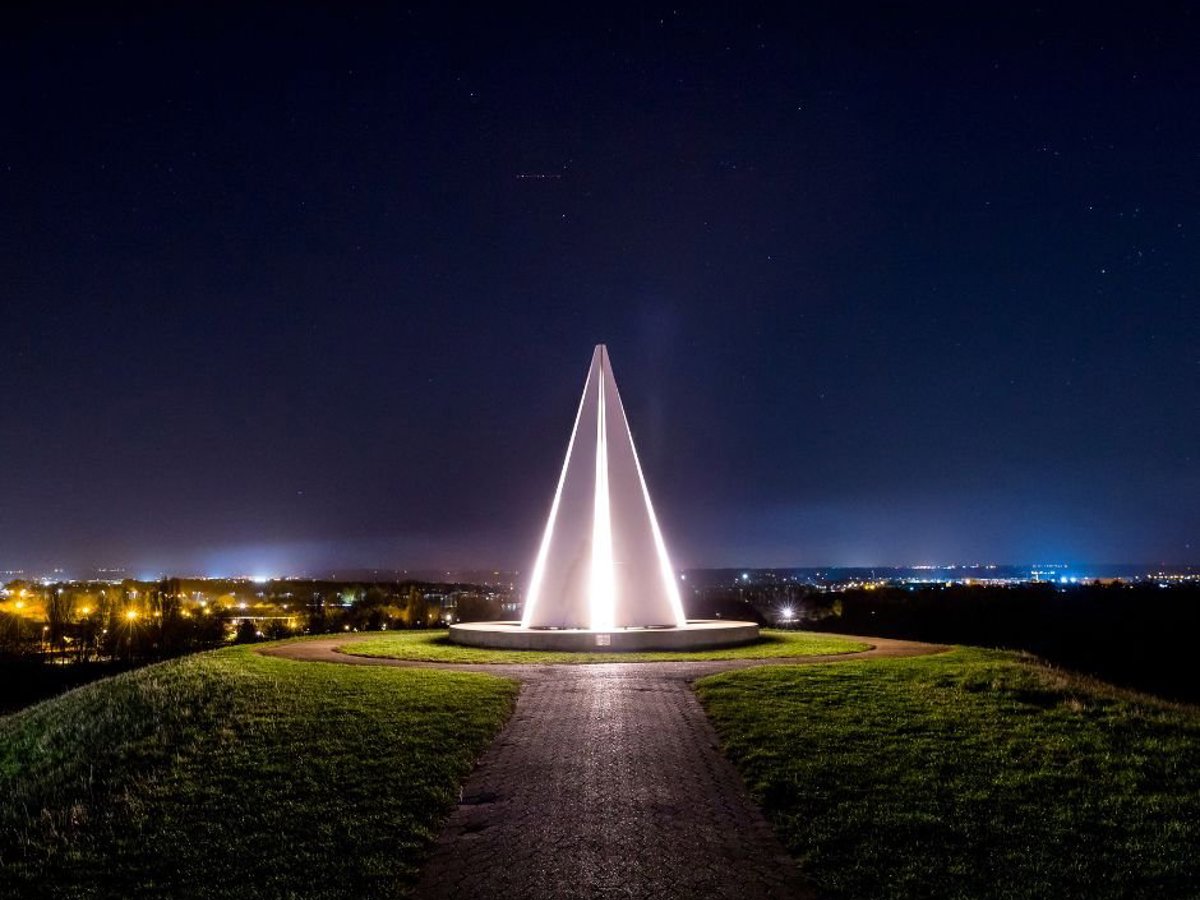Celebrating Campbell Park
“This central park should become the jewel in the crown” was declared in an early guidebook to Milton Keynes. Originally referred to as the “City Park”, Campbell Park was at the centre of the new city and an integral part of the vision for Milton Keynes from the earliest stages of its design. Comparisons were made with other city’s parks: Regents Park in London and Central Park in New York. The landscape designers took inspiration from 18th-century country houses, European sculpture parks and the garden cities of tomorrow.
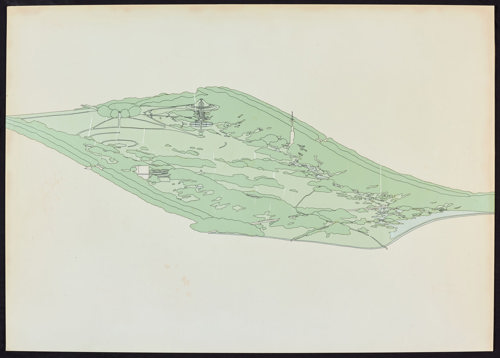
Image 1: Early designs for Campbell Park, like this axonometric view by Andrew Mahaddie, explore both the potential of the landscape and how it might be lived in. (© Milton Keynes Development Corporation. Crown Copyright. Used under the Open Government Licence v3.0. Image courtesy of Milton Keynes City Discovery Centre: MAH/02/03/040)
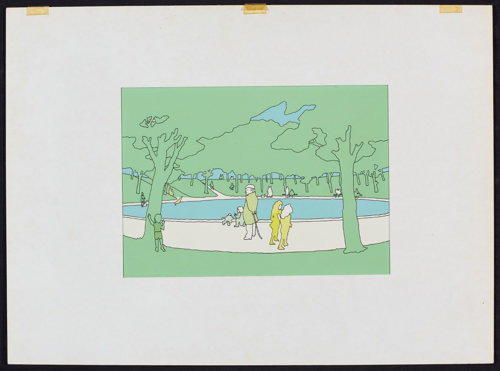
Image 2: City Centre Park - Round Pond: Black and white drawing with colour Letraset showing the round pond at the City Centre Park. (© Milton Keynes Development Corporation. Crown Copyright. Used under the Open Government Licence v3.0. Image courtesy of Milton Keynes City Discovery Centre: MAH/02/03/014)

Image 3: Planners made comparisons between Campbell Park and other city parks as they sought to “influence the way in which the centre of Milton Keynes, and Milton Keynes as a city is regarded”. This image is from the MKDC 1985 Park Grid Square outline development plan. (© Milton Keynes Development Corporation. Crown Copyright. Used under the Open Government Licence v3.0. Image courtesy of Milton Keynes City Discovery Centre: B060/43.71.03)
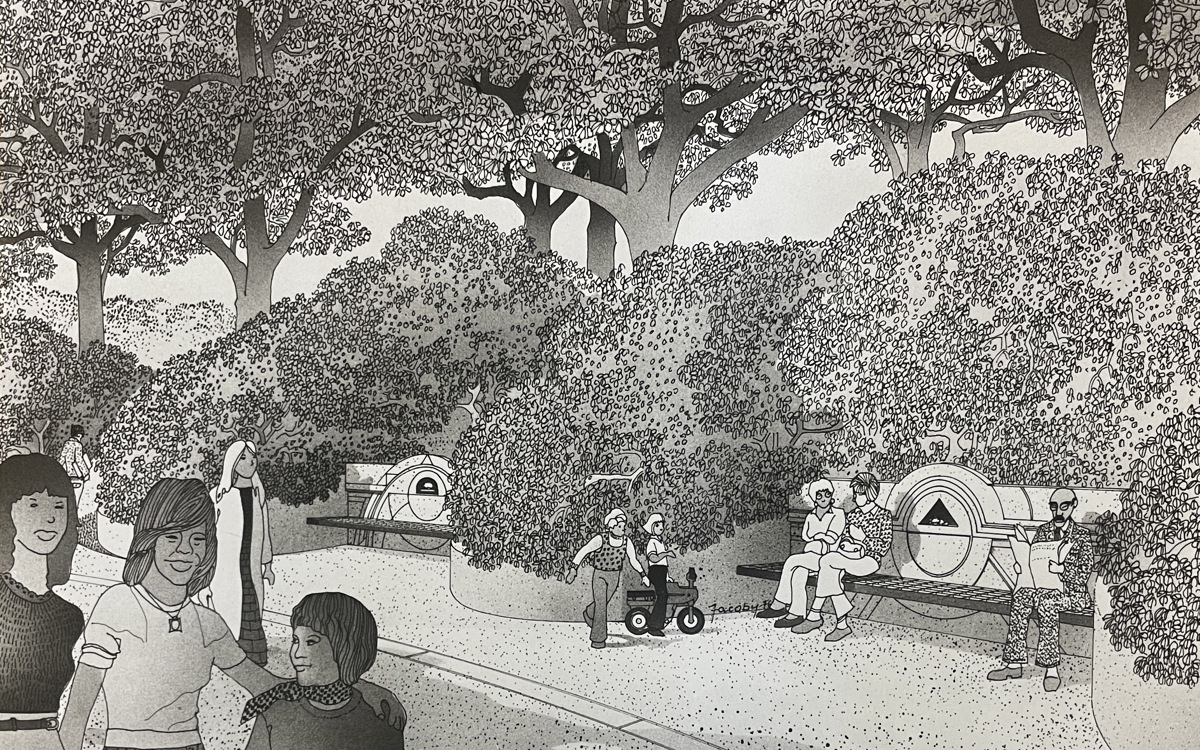
The City Park was to include many features. It would have, according to early outlines (EMC MK.17.75 - MKCDC): a rivulet walk for children, a water carpet, a glass bridge, a grotto and tunnel to a children’s ship and castle, a night scented garden, room for a pub and a cafe, an international sculpture centre, a grass bowl for events and a belvedere with extensive views. In 1975 the MKDC executive committee welcomed these imaginative ideas but acknowledged that implementation depended on the availability of finance. Plans for the park changed with the political and financial circumstances of the time, but the underlying concept of a new city park for the people of the new city remained.
Image 4: Proposed City Park, drawing of seating area by Helmut Jacoby. Jacoby’s drawings bring fine detailed tone and texture to Mahaddie’s pantone colour fields. (Buckinghamshire Archives: D-MKDC/16/1/71/1853)

Image 5: The opening of Campbell Park, May 1984 (Living Archive: JCP71)
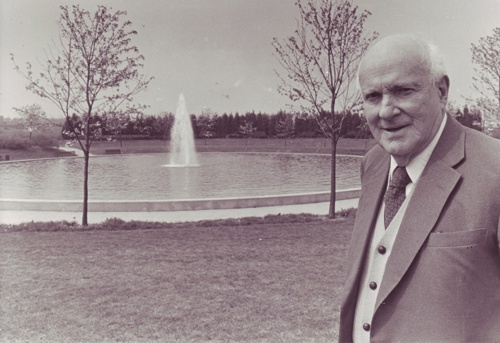
Image 6: Lord Campbell at the round pond and fountain (Living Archive: CMK103)
"We were, after all, dedicated followers of Ebenezer Howard’s Garden Cities Movement, as well as believing that landscape can have a fundamental influence on the health and quality of life of all citizens, and in consequence the success of the new city. We prepared the Campbell Park development plan therefore to contain zones of landscape character related to a range of moods, atmospheres and uses composed together so that none compromised the overall integrity of the park."
Neil Higson, Bucks Gardens Trust Dossier, 2018As Milton Keynes grew, and as the Development Corporation set about persuading companies to relocate here, the “Park Grid Square” was staunchly defended against alternative uses.
Here is Bob Hill, Commercial Director of the MKDC, on protecting the park from commercial incursions.
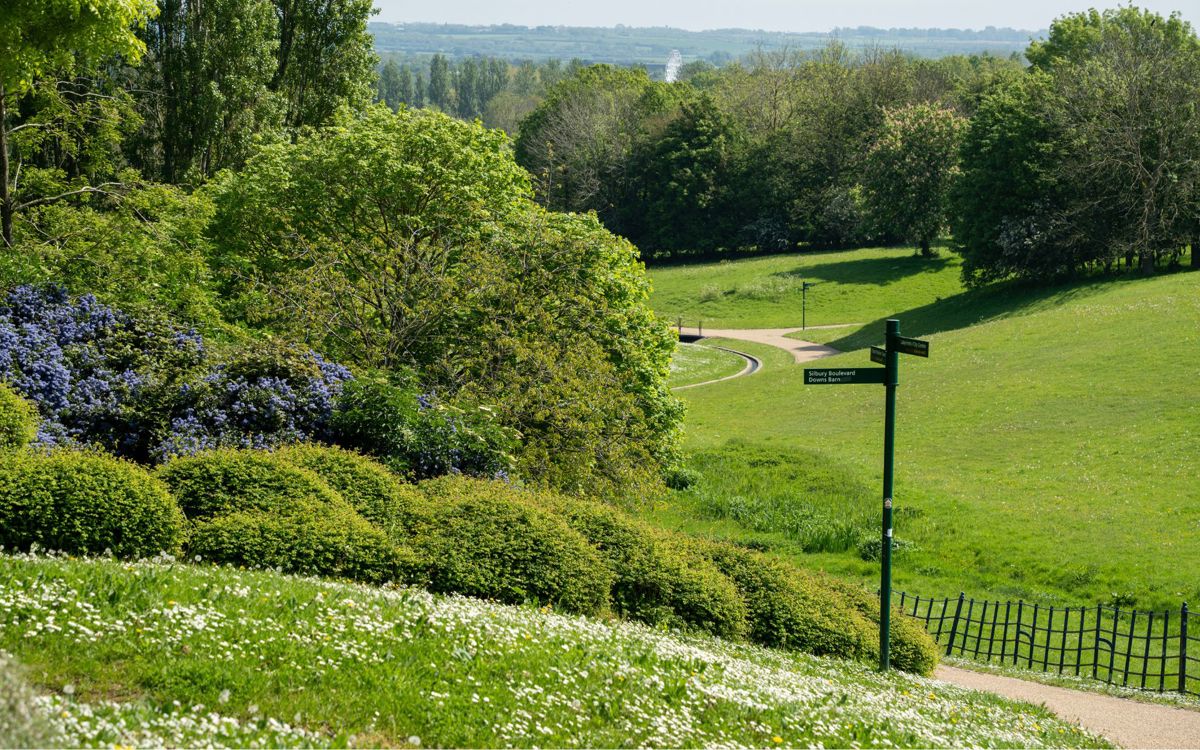
Since 2020 Campbell Park has been listed by Historic England as a Grade II Park and Garden. The list entry recognises the park’s historic interest, unique design, and careful preservation by its custodians through changing social and environmental circumstances.
Follow the Campbell Park Trail to discover the history of this Grade II listed landscape. Featuring archive photos and videos with the people who helped make the park what it is today.

